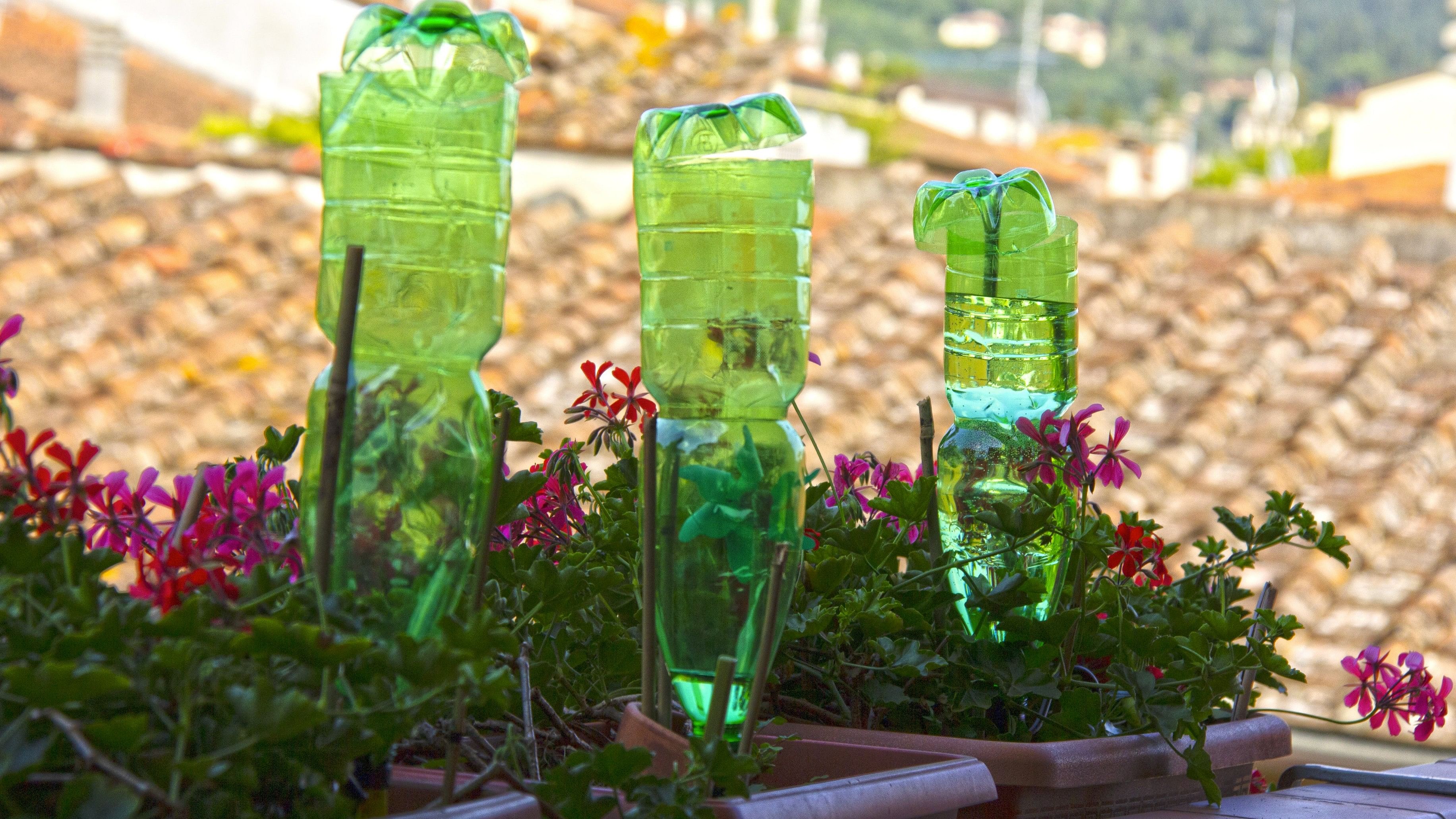
Credit: DH Photo
Droughts remind us of the preciousness of water, especially when we witness our favourite plants withering in the hot sun. In my garden, even the resilient lime plant has dried up. I am not sure if the guava tree, which has lost all its leaves, will survive, even though a scratch test reveals a flicker of life in its bole. My vegetable saplings growing in containers crave constant moisture, as they are in their flowering period. The sun is harsh and unkind and as we face the dry days of summer, the quest to conserve water becomes more than a responsibility.
Container gardening presents a unique challenge compared to planting directly in the ground. Plants in the ground benefit from a network of roots that share moisture, allowing them to withstand dry spells better.
Water poured into a container drains quickly, leaving only what the soil absorbs in those moments for the plant’s roots. The excess water just evaporates in the tray. This underscores the importance of effective watering systems, particularly during droughts, to ensure the survival of our thirsty plants.
I plan to invest in a drip irrigation system next year to conserve water. But to wade through the current situation, I devised a simple DIY (Do It Yourself) method using plastic bottles to keep the soil moist and my vegetable saplings growing. It is during tough times that we come up with practical solutions, is it not?
If you have noticed, certain plants like tomatoes have a higher water demand than others like brinjal. During peak summers, they may need watering both in the morning and evening. We need an effective plan to meet the needs of these thirsty plants without wasting water to evaporation.
To address this issue, I turned to my collection of plastic bottles which I had saved for creative use. With a few simple cuts, I transformed them into a multi-functional tool — a compost maker and a drip irrigation system.
I made a horizontal slit along the circumference, about a quarter of the way up the bottom of the bottle, creating a large opening. The cap has a small hole to allow for a steady drip. To ensure the bottle stood upright with the cap down, I attached chopsticks to each side (you can use any stick but make sure it is as tall as the bottle) giving it a unique, almost stiletto-like appearance.
To complete the system, I filled the bottle with a mixture designed to benefit both the plants and the composting process. This included a handful of vegetable peels and crushed dry leaves, along with a tablespoon of existing compost, a teaspoon of compost maker to accelerate decomposition and a bone meal for added plant nutrition.
The cocopeat helps the compost maker efficiently break down the kitchen waste. With the mixture inside, I positioned the bottle upside down near the plant’s roots, ensuring a half-inch gap between the opening and the soil. Finally, I filled the bottle with water and sealed the large cut with masking tape to prevent unwanted insects from entering and preventing evaporation.
The beauty of this system lies in its slow and steady drip. Using a 500ml bottle for a large pot, I can provide approximately 300ml of water per day. This gradual release keeps the soil consistently moist for most of the day, requiring only a refill in the morning. The added bonus comes in the form of nutrients from the bottle’s contents. As the vegetable scraps and leaves decompose, they release nutrients like those from the bone meal, promoting healthy stress-free plant growth. After a month, the composted mix can be returned to the soil, and the bottle refilled for continued use. Needless to say, my vegetable patch is happy with this efficient watering solution!
My DIY irrigation system might not be a permanent solution, but it serves as a reminder that even with limited resources, we can find creative ways to conserve water in our gardens. If you’re facing similar challenges, I encourage you to experiment and find solutions that work for you. Do reach out to me if you have solutions different from mine. Remember, every drop counts when it comes to preserving water.
Motley Garden is your monthly kaleidoscopic view into a sustainable garden ecosystem.
The author believes gardening is about more than just cultivating plants. It’s also about the bees, butterflies, insects, flies, and bugs that make it their home. She posts on social media as @all_things_in_my_garden. She is also reachable at allthingsinmygarden@gmail.com